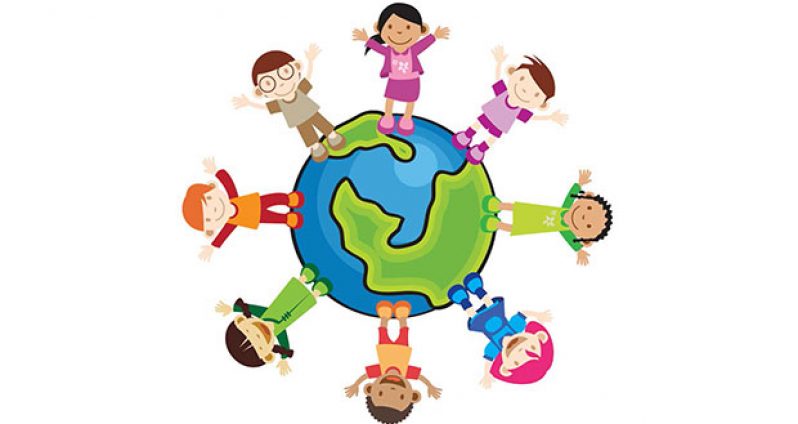Willing or not, we all must be prepared to accept the reality that our children are the ones who sooner more than later will inherit the responsibilities of taking care of this earth. At a tender age we teach our children not to steal, lie nor kill. These things we try to instill into their morals for them to carry for the rest of their lives; hoping the choices they make will reflect such teachings.What about teaching them not to litter? or to generally respect the environment, a place we all call home? These are some of the simple values we should strive to inculcate in our children, so it will grow with them and also be reflected in the choices they make towards the environment. Today’s article readers will give you some general pointers which I hope will help train your children to care for the Environment.
How children learn about nature, their ability to understand environmental challenges and solutions, and their reactions to hearing and learning about environmental problems, all depend on a number of factors, including:
• Their age, temperament and stage of development;
• Their sense of security;
• Their parents’ feelings/reactions to environmental problems;
• How exposed they have been to media coverage of environmental problems/natural disasters;
• How adequately they have been able to discuss their feelings about their world, and how well adults have been able to listen to those feelings; and
• The influence of their peer group – how their friends and the people they identify with are responding to environmental issues.
Steps for teaching children about the environment…
These are some steps that outline ways to guide children’s curiosity and enthusiasm for the natural world while helping them to understand environmental problems, deal with their concerns, and get interested and busy with solutions.

Step 1: Allow your children to spend some time with nature
Young children need opportunities to explore nature and form a bond with it. They need chances to touch and feel and look and smell. Get them involve in more outdoors activities in school and at home, take routine indoor activities to the outdoors once in a while this will make learning and play time even more fun and give children a greater appreciation for the ambient environment.
Step 2 : Help your children find something positive to do for the environment.
You can encourage your children to take action and believe they can make a difference to the environment with even the smallest of ways. Encourage them to join environmental and nature clubs in their local community or schools, or even lend voluntary support to these clubs and organizations that are trying to make a difference in the community or the country. This will empower students to become good stewards to the environment and lend a sense of satisfaction thru their positive contributions. Children can also learn a lot by watching parents doing positive things for the environment.
Step 3: Listen to your children’s concerns about the environment
Many children might have concerns about climate change and other environmental problems, and need help to make sense of events. Listen first, and listen closely, to what children are asking or saying, and think about whether they are looking for factual information, or if the questions are expressing anxiety about environmental problems.
Adolescence is a time when young people are developing their abilities to use abstract and logical thinking. This can lead to adolescents questioning everything in great detail.
Step 4: Allow children to tell you how they feel and think
Children need to be able to let the adults know how they feel and think. It can be helpful to let them know that it is reasonable to feel angry, anxious, sad, helpless, or depressed about environmental problems. Young children cannot express complex emotions easily or directly. Parents can look for clues to their feelings that they might send through their play, drawing, spontaneous conversations, and behaviour.
Step 5: Find out what your children know
Find out what your children know in case they have mistaken ideas or facts, and correct any misconceptions. Keep your responses appropriate to the age of your child and also appropriate to the child’s level of understanding and emotional maturity. Do not burden children with information beyond their cognitive abilities.
Step 6: Be aware of how you talk
Adults need to be conscious of the presence of children when discussing climate change and other worrying environmental problems. Be mindful of how you are reacting to news about environmental problems in front of your child.
Step 7: Monitor how much your children are being exposed to media stories of environmental problems
Children’s experience of media images contributes in significant ways to the way they think, act and feel about the world and social reality. Parents need to take responsibility for what their children are watching and listening to.
Step 8: Reassure your children and give them hope
Reassure children that millions of people all over the world making a difference and they have an important role to play in the process. There are many people who are dedicating their lives to researching ways to improve the health of the planet, as well as many who are part of local and global environmental movements.
You can share your ideas and questions by sending letters to: “Our Earth, Our Environment”, C/O EIT Division, Environmental Protection Agency, Ganges Street, Sophia, GEORGETOWN; or email us at eit.epaguyana@gmail.com.




.png)









